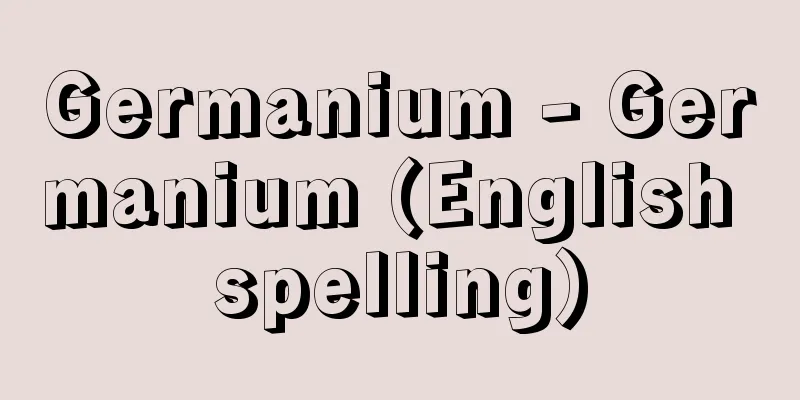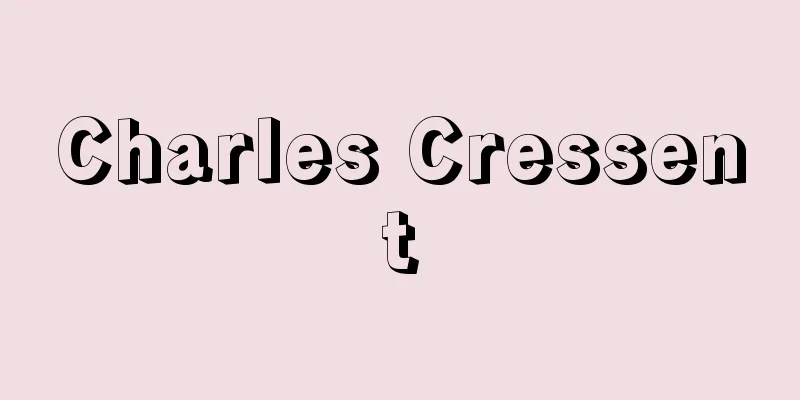Poetics

|
It refers to the theoretical study of the essence, form, content, types, and creative techniques of poetry (literature). Historically, it began with Aristotle's Poetics. The Poetics was rediscovered during the Renaissance, and along with Horace's Ars poetica, which was already recognized as a classic of poetics at the time, it came to be recognized as an authority on poetics. As research on it progressed, its scope of influence spread, and it had a great impact not only on the field of poetics but also on Western art theory in general. In the 17th and 18th centuries, under the influence of Aristotle and Renaissance poetics, poetics took the position of classical poetics. In the 19th century, traditional poetics as a theory of imitation and technique was reviewed, and the basis of poetry was sought not in rules, forms, or techniques, but in the creative power of human nature, imagination, genius, or the historical and ethnic characteristics of the work. At the same time, the meaning of "poetics" gradually changed, and poetics in the narrow sense was limited to metrics, with literary criticism, philosophy of poetry, and aesthetics taking its place, or Literaturwissenschaft (literary science) and the philosophy of literary history being proposed as new academic fields to replace poetics. However, starting with W. Dilthey's attempt at poetics at the end of the 19th century, there have been movements in the 20th century to revive the theoretical consideration of poetry and literature under the name of poetics. For example, there are attempts to reexamine the concept of poetics from the standpoint of literary studies, and the poetics of P. Valery, who revived poetics in a modern way as a theory of creative techniques. In Japan, poetics is equivalent to uta-ron (poetry theory) (such as Fujiwara Teika's "Monthly Excerpts"). (→ uta-ron, haiku-ron, bungeigaku, poetica) Source: Encyclopaedia Britannica Concise Encyclopedia About Encyclopaedia Britannica Concise Encyclopedia Information |
|
詩 (文芸) の本質,形式,内容,種類,創作技法などについての理論的考察をいう。歴史的にはアリストテレスの『詩学』 Peri poiētikēsに始る。『詩学』はルネサンスに再発見され,当時すでに詩学の古典として認められていたホラチウスの『詩論』 Ars poeticaとともに,詩学の権威として認められるにいたり,その研究が進むにつれて影響範囲は広まって,単に詩学の領域だけにとどまらず広く西洋の芸術論一般に大きな影響を与えた。 17,18世紀の詩学はアリストテレス,ルネサンスの詩学の影響のもとに,古典主義詩学の立場に立った。 19世紀では,模倣説,技法論としての伝統的詩学に対する反省が行われ,詩作の根拠は規則,形式,技法にではなく,人間本性の創造的な力,想像力,天才,あるいは作品の歴史性,民族性に求められた。同時に「詩学」の意味内容も次第に変化を示し,詩学は狭義には韻律学 metricsに限定され,代って文芸批評,詩の哲学,美学などがその位置を占めたり,あるいは文芸学 Literaturwissenschaft,文学史の哲学が詩学に代る新しい学問として提唱された。しかし 19世紀末 W.ディルタイの詩学の試みをはじめ,20世紀においても詩学という名称のもとに詩,文芸の理論的考察を再興しようとする動きがある。たとえば文芸学の立場から新たに詩学の概念を検討する試みや,詩学を創作技法論として現代的に再生した P.バレリーの詩学がある。日本では詩学にあたるものとして歌論 (藤原定家『毎月抄』など) がある。 (→歌学 , 俳論 , 文芸学 , ポエティカ )
出典 ブリタニカ国際大百科事典 小項目事典ブリタニカ国際大百科事典 小項目事典について 情報 |
Recommend
Arsenic (arsenic)
Periodic table element symbol = As Atomic number =...
Meister Bertram (English spelling)
… As architecture expanded windows and developed ...
Damaliscus hunteri (English spelling)
…[Yoshiharu Imaizumi]. … *Some of the terminology...
Alcedinidae
...They dig a horizontal hole about 1m deep into ...
Dithmarschen (English spelling)
The area is located on the southwest coast of the ...
Caritasou
An annual plant of the Chenopodiaceae family. A na...
Lure hook - Gijibari
…The official spelling is “tsuri-bari (fishing ho...
Old Institutional School - Old Institutional School
...The quantitative analysis is considered instit...
Badiya al-Raṣāfa (English spelling) Badiya al Rasafa
…It spans Syria, Iraq, Jordan, and Saudi Arabia, ...
Passive elements
An element of an electric circuit. It refers to el...
Eboshi celebration - Eboshi celebration
... The customs of coming-of-age ceremonies and e...
Natural Science
It is a translation of the Latin word physica, the...
Nilsson, Märta Birgit
Born: May 17, 1918, West Karup [Died] December 25,...
List rejection certificate - List rejection certificate
…In Japan, generally, there is no need to create ...
Silk thread spinning - Chushiboseki
A type of silk spinning method. It is a regenerati...









